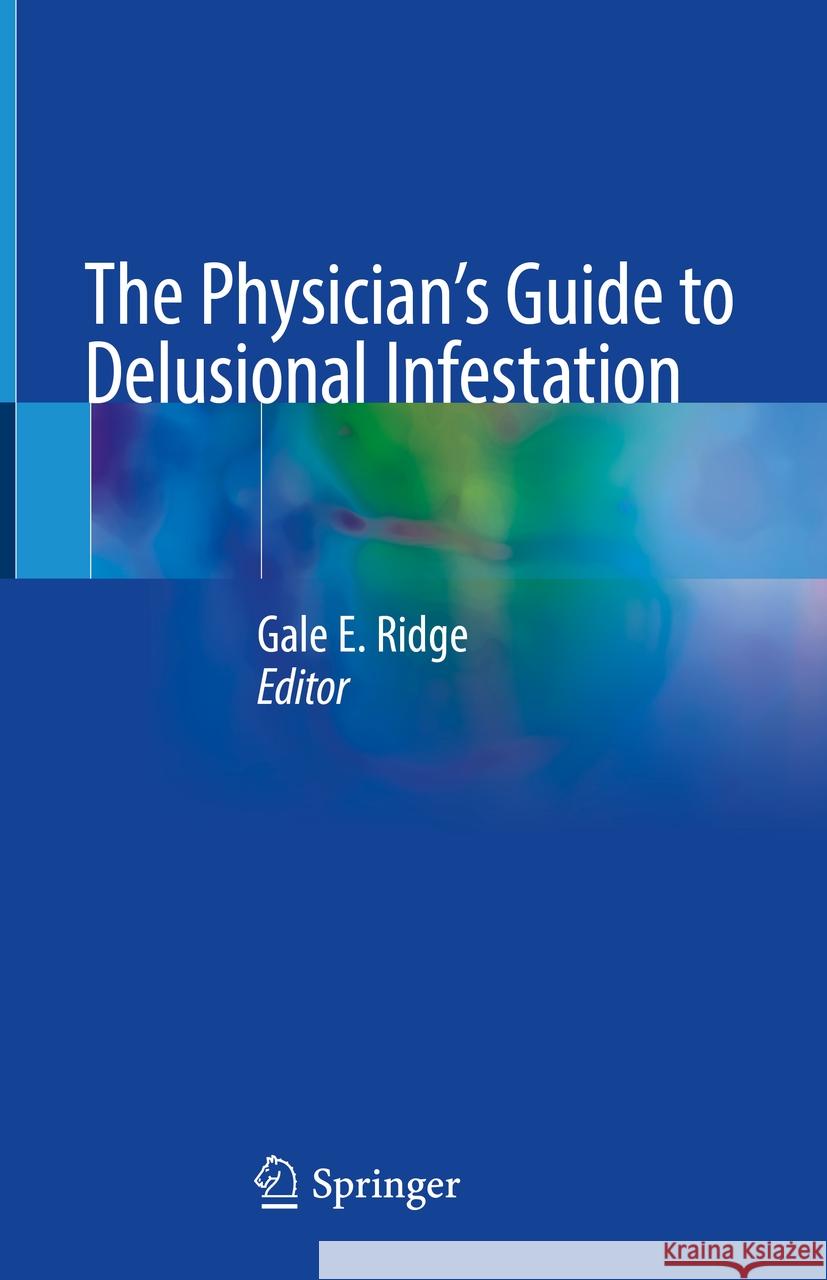


Part I. INTRODUCTION 1 Delusional Infestation: Its definition and forms, history, and useful literature. Part II. DIAGNOSIS AND MANAGEMENT 2 Interviewing, differential diagnoses, patient information, treatment, and resources. Part III SPECIFIC ISSUES 3 Practical Management of Delusional Infestation (DI). 4 Delusional Infestation. 5 Delusions of Infestation in the Media and on the Internet. 6 Animal Suffering and Euthanization Caused by Human Psychosis. 7 Delusional Infestation – A View from Europe. 8 Treating the Difficult Patient: How to Approach a Patient with Delusional Infestation. 9 Concerns for Infestation (CI): Dermatologic Evaluation of Patients with Unwanted,
Gale E. Ridge, PhD
Assistant clinical professor, Quinnipiac University, Frank Netter School of Medicine, New Haven, CT; director of the insect information office and chair, Connecticut coalition against bed bugs; EPA scientific advisory panel member; expert in insect taxonomy and systematics. CV attached.
This unique, ground-breaking book is a comprehensive clinical guide to the psychiatric disorder of Delusional Infestation (DI). DI is a psychiatric illness characterized by patients holding a monothematic fixed belief of infestations on their skin, body, or immediate environment - a belief that is not supported by objective medical evidence. Delusional beliefs may be shared among individuals, and perceived pathogens include living organisms such as parasitic worms, bacteria, fungi, and insects. Organic or non-organic infiltration by fibres, threads, or other inanimate particles or objects, known or unknown to medical science, are also described by patients. DI is severely underreported because of social stigma, limited physician awareness, and patient doctor-hopping.
Written for physicians, the book offers a multidisciplinary, compassionate care model for patients burdened by this pernicious disorder. Other health professionals and administrators will find the work highly valuable, as will professionals in fields such as veterinary medicine, pest management, entomology, parasitology, and information services supported by academia.
The Physician’s Guide to Delusional Infestation assembles and organizes all current knowledge of DI and presents material in three parts. Part I introduces and reviews DI’s historical background, showing how our understanding of the condition has developed. Its concise sections include useful tables, illustrations, algorithms, and reference lists for clinicians who work with DI patients.
Part II covers differential diagnosis, treatment, and ways to work effectively with DI patients. Since these patients are often high-functioning, particular techniques of interviewing, joining with patients, sampling, and laboratory testing are explained. International travel, physician fallibilities, possible alternative diagnoses, the Internet, and veterinary and public health concerns are all addressed.
Part III is a series of chapters written by experts in their fields. This section allows each author to present personal experiences from their respective professions -- observations and opinions that show a variety of perspectives among the book’s authors. Part III includes a chapter on common human parasites with their biology, behaviours, and distributions. The book will serve as a comprehensive, yet concise, reference for physicians whose patients have unusual, baffling, or implausible medical histories and physical examinations.
A soon to be gold-standard resource, The Physician’s Guide to Delusional Infestation equips and empowers all physicians -- and many others interested in the topic -- with an expert, comprehensive understanding of this complex disorder.
1997-2024 DolnySlask.com Agencja Internetowa







